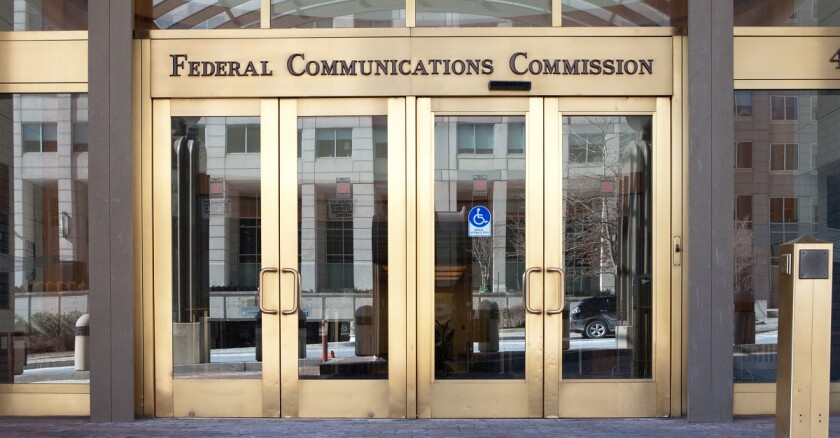The 2020 Broadband Deployment Report showed that very high-speed broadband service (250 Mbps/25 Mbps) can be accessed by roughly 85 percent of citizens — a number that has gone up by 47 percent since 2017. The report attributes this and other gains to the $80 billion invested in broadband infrastructure in 2018, a significant increase in fiber-to-the-home projects in 2019 and the advent of 5G technology.
“From 2016 to 2018, the number of Americans without access to 25/3 Mbps fixed broadband service fell by more than 30 percent,” said FCC Chairman Ajit Pai, who also remarked that he was proud of the accomplishments under his leadership.
The two other Republican Party commissioners, Brendan Carr and Michael O’Rielly, approved the report. Carr said the commission “pursued partisan policies” for years and argued that deregulation has been key to recent success.
In a more mixed statement, O’Rielly said it was “undoubtedly accurate” that broadband is “being deployed to all Americans in a reasonable and timely fashion.” However, O’Rielly expressed concern about the FCC’s continued use of Form 477 data to determine eligibility for federal broadband funds.
“Form 477 data is obviously extremely flawed and problematically applied as a basis for distributing USF [Universal Service Fund] funding, as recognized by Congress in the Broadband DATA Act,” O’Rielly explained, “and this point is especially clear in light of the huge discrepancies between this item’s charts and the entire premise underlying the Rural 5G Fund Notice concurrently under the Commission’s consideration.”
O’Rielly added that the FCC’s reporting continues to show favoritism toward fiber networks over wireless hot spots and 5G. “It’s obvious that mobile and fixed broadband are increasingly converging into a single market, and I am dismayed that for yet another year, we have opted to rehash our tired, siloed approach rather than pursue a technology neutral analysis,” he said.
The two Democratic commissioners were even more critical in their dissenting views. Geoffrey Starks also took aim at the inaccuracy of 477 data, claiming that it calls the findings of the report into question. Starks also highlighted that the commission perhaps underemphasizes the problem of the digital divide in non-rural settings.
“Census Bureau surveys show that three times as many households in urban areas remain unconnected as in rural areas,” Starks said. “When it comes to making sure all Americans can access affordable, high-quality broadband, we have a long way to go.”
Jessica Rosenworcel’s critique of the report was the longest. Rosenworcel called the report “baffling” before citing examples that underline the nation’s challenge to get everyone connected.
“Look at Congress constantly pressing for new programs to extend the reach of internet access in the United States,” Rosenworcel said. “See governors establishing committees and support systems to expand broadband to those who are not connected. Take note of mayors everywhere clamoring for better broadband so their communities have a fair shot at digital age success.”
The aforementioned Broadband DATA Act was signed by President Donald Trump in March. The legislation intends to correct the issues with Form 477 data. Although Pai signaled his support for the law, he implied that the FCC hands are somewhat tied until more money is made available for the improved data mapping.
“In order for this legislation to live up to its full potential, it remains critical that Congress appropriate the necessary funding for the Commission to implement the requirements of the Broadband DATA Act,” Pai said in a letter to Sen. Roger Wicker. “I look forward to working with you and Congress in general to fund this broadband mapping initiative.”
The FCC has taken steps recently to help expand Internet access. Last week, the commission opened up 1,200 megahertz of spectrum in order to boost “low-cost wireless connectivity in countless products used by American consumers.” In an interview with Government Technology, Cisco Vice President of Technology Policy Jeff Campbell said this decision from the FCC will result in a “fundamental transformation of what Wi-Fi is capable of doing.” He reasoned that this world-leading use of spectrum will benefit the new reality that Americans face in the wake of COVID-19.
“We’re learning a as a country what we as a company like Cisco already knew: that many people can do their jobs from home when they’re connected to the right technology,” Campbell said.
Despite much support for opening this spectrum for unlicensed use, the FCC was critized by broadcasting industry members who fear that the decision could lead to technical interference.
“Rather than require unlicensed proponents to prove they will not cause harmful interference, the commission shockingly forgoes any independent analysis that interference won’t be too bad or happen too often," said Dennis Wharton, executive vice president of communications for the National Association of Broadcasters, according to TV Technology. "This ‘fingers crossed’ approach is bad policy and not what is required under law."








